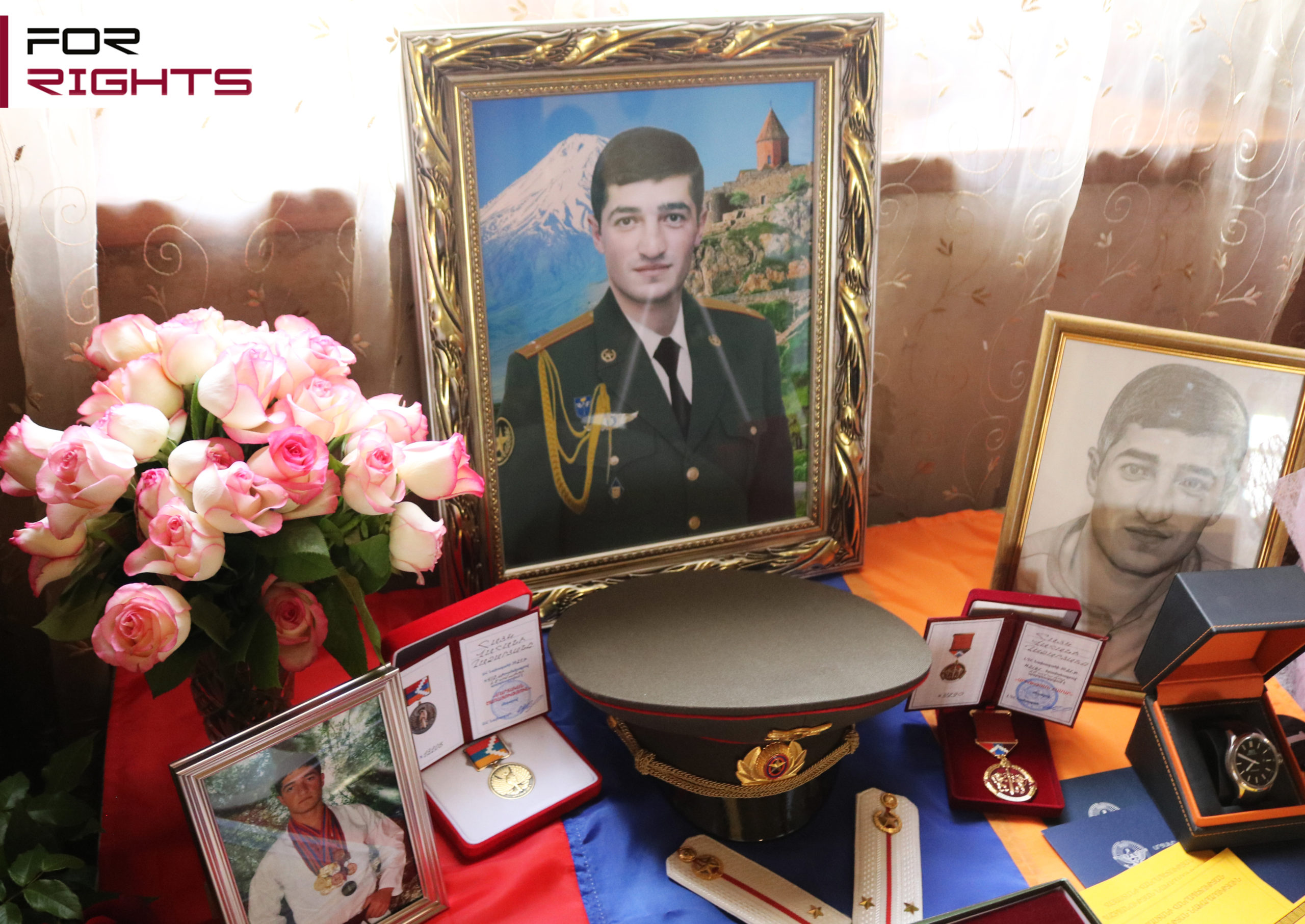Seven and a half months after the end of the war, a young officer, 24-year-old Hayk Ghazaryan, was buried in the village of Aramus, Kotayk region. He died on October 2, but his remains could not be found earlier.
Hayk’s remains were found on March 27 in Jabrail, and the identification of the remains was carried out through DNA testing. Before that, three searches were carried out in the same place, but in vain.
“It is said that he was on a combat mission. He completed the task and returned to the troops. On the way he saw that there was an enemy movement. During that time, the troops were shelled. Hayk ran to the army and shouted that the soldiers should not stand in groups, so that they would not suffer many losses. And then he got a shrapnel wound there and died… Nobody knew he was dead. Even his name was not on the list of victims. He was on the list of the missing,” tells Christina Hovhannisyan, the mother of the dead soldier.
She remembers that her son loved military service and was going to dedicate his whole life to it. In November, he was about to take a vacation, come home and get engaged to his girlfriend, Ani. The day before he died, he called Ani and asked her to make sure that everything would be fine. “He said, ‘Don’t worry, you can go and choose an engagement ring right now.’ Choose whichever you want to choose. I will come, I will definitely come. Our engagement will definitely take place. Do not think of anything else,” Mrs. Christina told us about the last conversation between the lovers. According to her, even after the 225-day search and even after finding Hayk’s remains, Ani does not believe that her beloved has died, and continues to wait for him.
Prior to joining the military, Hayk practiced karate and had won a black belt. Coach Andrey Piliposyan mentions that Hayk was a knowledgeable officer, he is alive and will always be. “If the management were right… the boys were ready and in high spirit. Our boys. There were students I was able to contact during the war. Their fighting spirit was very high. My opinion is that there was no right direction, right management, as a result of which we have what we have today.”
Aramus village of Kotayk region has 6 victims and 6 wounded during the 44-day war.
According to Hayk’s teacher Margarit Marukhyan, everyone in the village mourns for all the victims of the war, and Hayk’s death is an unspeakably great pain. “The whole village knew and respected [his choice]. “Everyone said he had chosen the right profession; he was a real military man and everyone predicted a great and bright future for Hayk.”
Ani Gevorgyan

